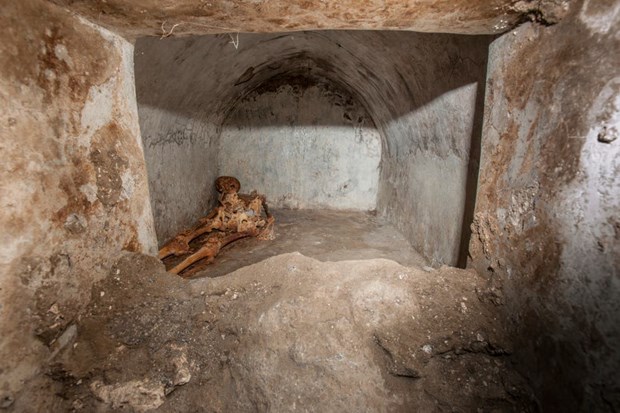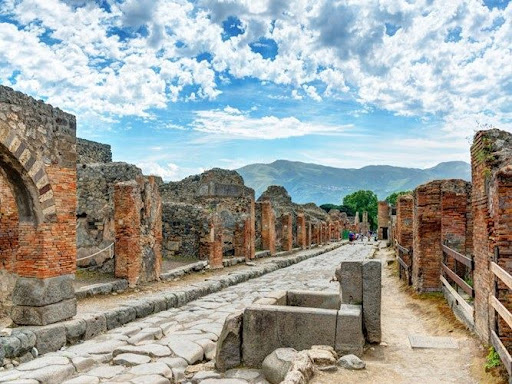
A 2,000-year-old sarcophagus and human remains were found in Pompeii, Italy, La Repubblica daily reported on the 17th (local time).
The coffin was unearthed near the Porta Sarno cemetery, 1 km east of the center of the ancient city of Pompeii.
In the inner space of the sarcophagus, 1.6 m wide and 2.4 m high from the front, the remains of a human were also found, attracting the attention of the archaeological community.
It is believed that Pompeii died in 79 AD before being burned to ashes by the eruption of Vesuvius.
As if the body had been preserved like a mummy, the skull was covered with white fur, and the left ear was also partially preserved.
Pieces of cloth from the clothes wrapped around the body were also found.
The Pompeii Archaeological Park said it was “the best preserved skeleton ever found in Pompeii.”
According to the funeral culture at the time, where bodies were mostly cremated, this method of burial was said to be very unusual.
The excavation team also said that Greek characters were used in religious ceremonies in ancient Rome because of the Greek inscriptions on the sarcophagi.
According to the content of the inscription, the excavation team estimated that the person found as a skeleton was a liberated soldier named ‘Marcus Benerius Secundio’, who was in charge of the temple of Venus during his life mine.
Regarding the results of the excavation, Culture Minister Dario Franceschini said “Pompeii continually surprises us, and it is a source of Italian pride.”

After the volcano erupted, Pompeii was buried underground for 1,500 years, and excavation work began in earnest when remains were unearthed during the construction of an aqueduct in the 16th century
. Current excavation has reached the point where one can vaguely guess the shape of the past.
Even now, it is difficult to accurately estimate the hidden scale of ancient Rome, since various monuments and monuments are being excavated.
The site of Pompeii was declared a World Heritage Site by UNESCO in 1997 because of its great archaeological and conservation value that offers a glimpse into the lives of people at that time.
Before the coronavirus pandemic (global infectious pandemic), this place was also a tourist attraction with about 4 million domestic and foreign tourists each year.